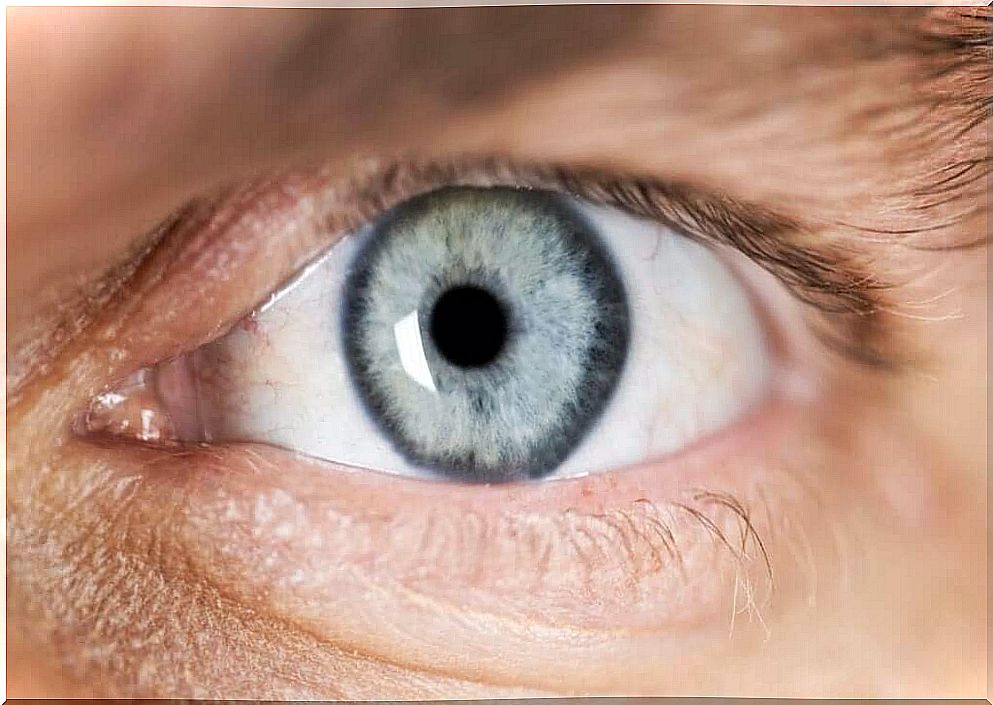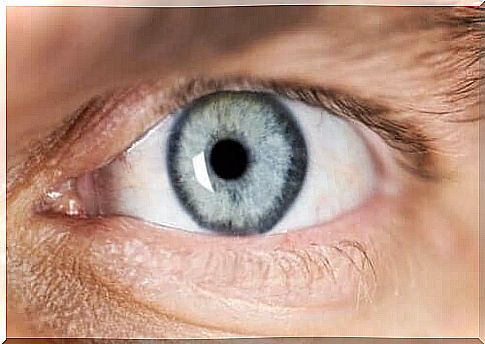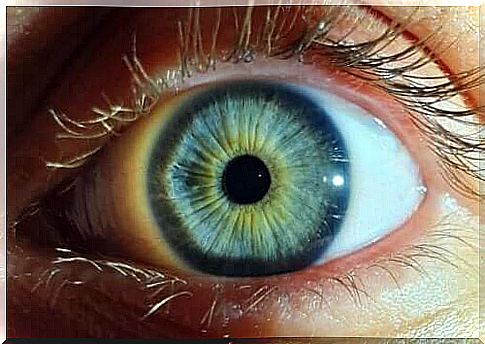Description And Causes Of Miosis Or Small Pupils

Miosis is the medical term used for small pupils. In other words, it involves the contraction of the pupil. It may seem irrelevant, but it actually reveals a lot about one’s health. In this article, we are going to discuss the causes of miosis.
This part of the eye responds physiologically to changes in light by contracting or widening. The size also changes when someone ingests toxins or when there is brain damage. So read on to find out everything.
Miosis or small pupils
As we just noted, miosis consists of the contraction of the pupil, the darkest part of the eye in the center of the iris. This is responsible for controlling the amount of light that enters the eyeball toward the retina.
The pupil dilates or contracts to adjust light, depending on how much of it there is in a particular environment. So it dilates when the environment is dark, this is called mydriasis.
The pupils, on the other hand, get smaller when there is a lot of light. This is a normal physiological reflex controlled by the parasympathetic nervous system. These movements are due to the ciliary muscle, the sphincter muscle present in the eye. The sympathetic nervous system coordinates the action.
Causes of Miosis

As we explained above, miosis is a physiological process that occurs in response to the amount of light. However, it is not the only situation that can lead to this reaction. Certain substances or diseases can also cause it and we will now describe those causes of miosis.
Opioid consumption
Opiates alter the central nervous system. People use them as medicine for a particular condition or for recreational purposes. Some examples include:
- fentanyl
- Morphine
- Heroin
- methadone
They suppress the nervous system and as a result the pupils contract and they hardly react to light stimuli. According to an article published in Universidad Libre Seccional Barranquilla (Spanish link), opioid poisoning, among other symptoms, is characterized by miosis and respiratory and consciousness suppression.
Intoxication by chemicals
In addition to opioids, there are many other chemicals that can lead to miosis. In fact, several drugs list it as one of their side effects, antipsychotics like haloperidol for example (Spanish link). The same applies to topical medicines used to treat glaucoma.
Horner’s syndrome and miosis
The symptoms of this condition appear after nerve damage. This condition causes myosis and a drooping eyelid, and it also reduces sweating on that side of the affected face.
According to an article published in Acta Médica del Centro (Spanish link), iatrogenesis is one of the main causes of this syndrome. That is, it occurs as a result of medical failure after facial surgery and dental or therapeutic procedures performed for trigeminal neuralgia.
Stroke
In a number of cases, miosis can occur after a brain haemorrhage, depending on the area of the brain affected by the haemorrhage. For example, in a serious stroke or if the thalamus is involved.
Pancoast tumor
This type of cancer occurs in the lungs and can affect parts of the sympathetic nervous system responsible for producing mydriasis, the opposite of myosis. The pupil cannot dilate and therefore remains contracted.
Diagnosis of small pupils

To determine the cause of miosis, the best thing you can do is look at the general condition of a particular patient. Many of the etiologies that cause the symptom, such as opioid poisoning or brain haemorrhage |(Spanish link), usually involve a change in the level of consciousness.
Ideally, ask the person if he is conscious if he is under the influence of drugs or medication. Also observe how the pupils react to light stimuli. A doctor or nurse will test different eye reflexes to check neurological status (Spanish link).
The photomotor reflex is one of them, which consists of observing whether the pupil contracts more when exposed to the light. Another is the consensual reflex, which confirms whether the pupil of the other eye (the eye that is not illuminated) is also contracting. This shows whether the injury is in one of the peripheral nerves or in the upper brain.
A physiological reflex
Miosis or small pupils is a physiological mechanism that occurs in response to light. However, it can also be due to neurological damage or intoxication from certain substances.
It is therefore an essential part of the medical examination and provides a lot of information about a patient’s condition. You have to take into account an underlying pathological process if the phenomenon persists.









